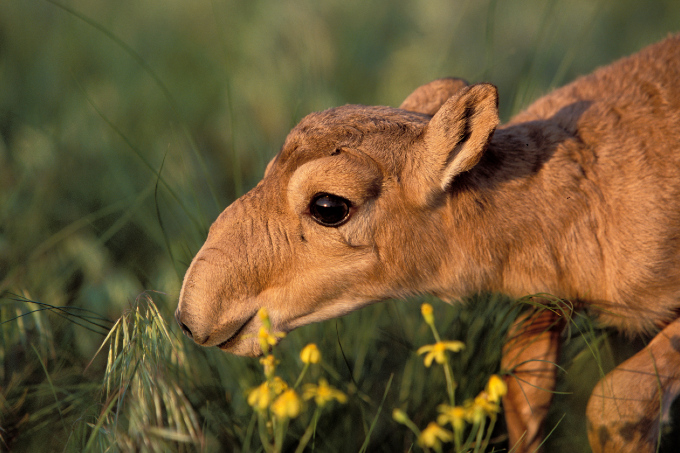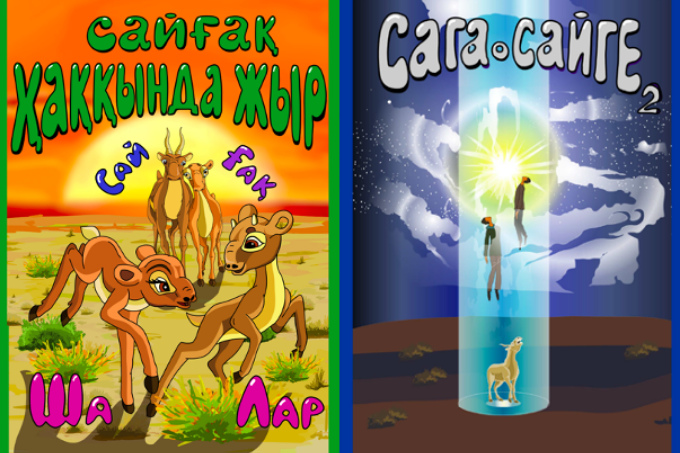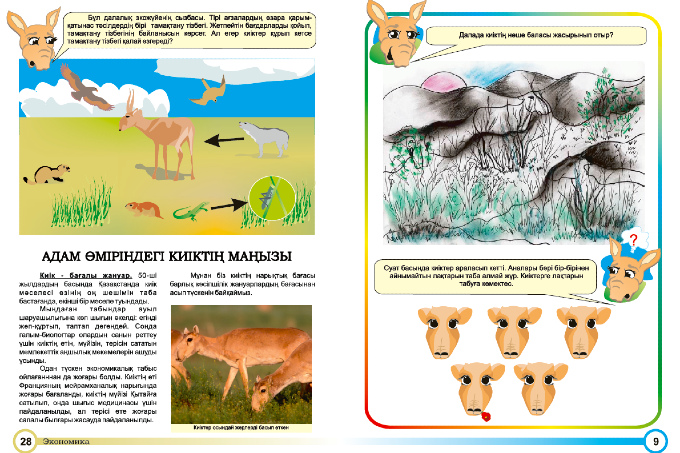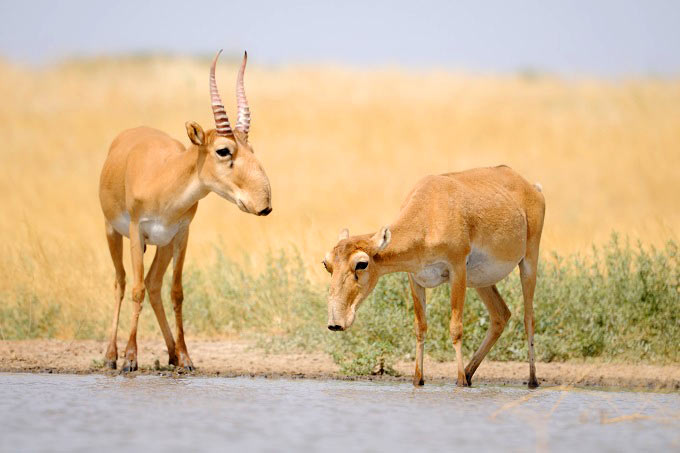Environmental education for the Saiga
NABU supports the endangered antelope

photo: Jean-François Lagrot
The Saiga antelope (Saiga tatarica tatarica) is an extraordinary species. One country in particular can be called their homeland – over 95 percent of the global Saiga population lives within the Central Asian country of Kazakhstan.
Intensive poaching following the breakdown of the Soviet Union caused a population collapse. Within a decade, the Kazakh Saiga population had decreased from more than 1.2 million to only 40,000 to 30,000 individuals in the 2000s – a decline of 97 percent.

Saiga antelopes at dusk - photo: Shutterstock
Saiga populations have been able to recover in recent years. A survey counted over 500,000 animals in the Ural mountains in early 2021. However, the International Union for Conservation of Nature (IUCN) still classifies the Saiga as critically endangered.
Big contributions to their recovery have been made through environmental education of the local population. In order to raise awareness for the critical state of the Saiga population, NABU targeted children and adults alike. The message was clear – to prevent poaching and raise the future generation to care about the Saiga and its existence. To deliver this message most effectively, NABU employed creative educational material – a schoolbook, animated cartoon films, and comic books.
The Saiga schoolbook
In cooperation with competent partners, NABU developed a Saiga schoolbook. It is designed for children age 9 to 13 living in communities near the Saigas’ habitat. The content has been tailored to get the kids acquainted with the unique animal as well as its threatened status.
The book consists of two main parts:
one for younger children, including legends and fairy tales about the Saiga complemented by poetry, art and handicraft. The illustrations incorporate a Saiga cartoon character that follows the reader throughout the story.
The second part of the book educates the more teenage schoolchildren about biology, ecology and threats of the Saiga, as well as the need for their conservation, and conservative actions already underway across the globe. This part of the book gives the children very palpable inspiration what they can do on a local level to save the Saiga and its habitat.
The book is available in Russian, Kazakh, Mongolian and Karakalpak language.
The Saiga animated cartoon films (“Saga of the Saiga”)

A scene from “Saga of the Saiga Part 1” – screenshot: NABU
In an effort to connect scientists and artists for Saiga conservation, NABU together with producer Martin Lenk and Studio Animaster co-produced two animated cartoon films – "The Saga of the Saiga" and its sequel ("Part 2"). Animated cartoons are very popular in Kazakhstan and therefore a suitable way to reach people of all ages for improvement of the Saiga's image. The films are tackling the problems of poaching Saiga for their horns and the role of the species for the Kazakh society in the past, present, and future.
Watch both full length features with English subtitles below. On our YouTube channel "NABU TV" you can also watch the films in Kazakh (Part 1 | 2) or Russian (Part 1 | 2) language.
The Saiga comic books
The cartoon films have each seen a comic book adaptation. As physical printouts these helped further illustrating the subject matter thereby facilitating the work in the local communities close to the Saiga habitat.

Covers of the comic book adaptations "Saga of the Saiga" Part 1 & 2 - © NABU
Usage Rights Disclaimer: All material can be used for non-commercial educational purpose to support protection of the Saiga antelope. To request re-publication or higher resolution printable material please notify us at the email provided in the contact section. Please always state publication details (number of copies, language, country etc.) and ensure that authors and producers of the material are properly credited.
More about the saiga
Good news for Central Asia's saiga antelopes! After many years of conservation work by NABU and others on behalf of the species, populations have recovered dramatically. These unique animals are no longer on the brink of extinction. A resounding success story! more →
Saiga antelopes are part of the steppe, just as bison are part of the prairie. Yet this rare animal only survives in five areas in Asia. NABU is helping to preserve the saiga in Kazakhstan with projects for community-based conservation and environmental education. more →
A trunklike nose gives the saiga antelope its unique appearance and is a perfect adaptation to its surroundings. But the survival of these striking animals is threatened by poaching, loss of habitat and disease. more →




